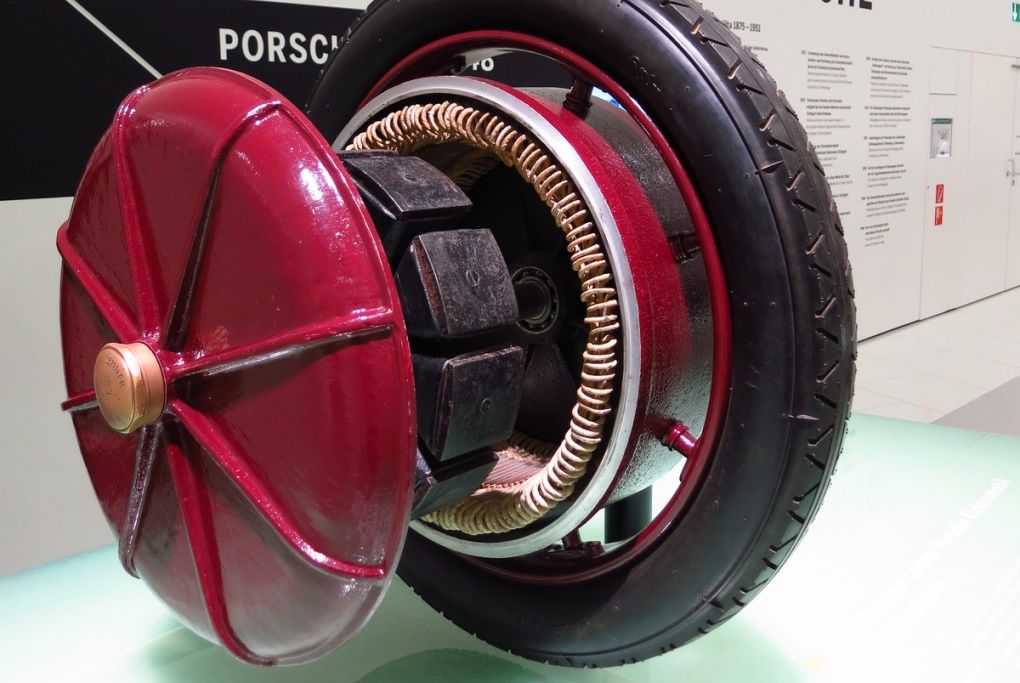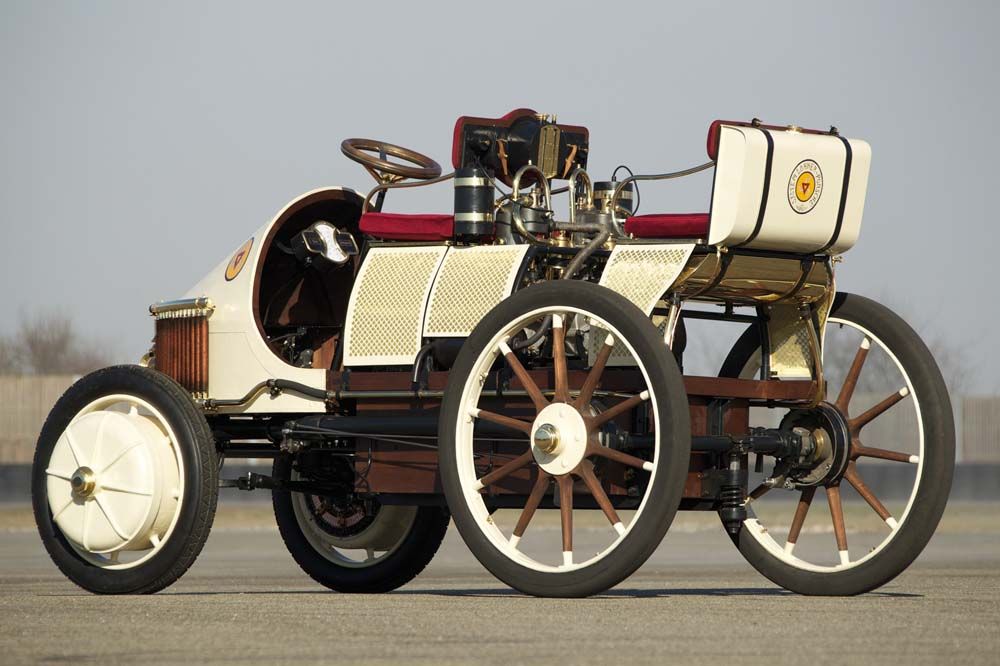- cross-posted to:
- hackernews@lemmy.bestiver.se
Everything but metric.
Did they update the page since you commented? I see kw and kg on there… 🤷
Now latest testing of an even lighter 12.7kg version on a more powerful dynamometer has shattered this record, with a staggering 750kW (>1000bhp) short-term peak rating, resulting in a new unofficial power density record of 59kW/kg
They’re based in the UK, they have no excuse.
Likely just the article
Until someone tests it independently, this should be considered BS.
I’ll give them some credence based on the cars their motors are already used in and the fact that their parent company is Mercedes-Benz. Doesn’t look like they’re a bunch of grifters seeking investment.
I suppose, but I’m skeptical of car manufacturer claims, too, until independent testing is done.
I hope this is real and think it’s awesome, but will wait to see if they exaggerated.
Well, the peak output is a useless number, that’s just record chasing. I think the continuous output is the number we should be looking at. That is a bit more believable and also started in the article that that number is an estimate for now.
So IMO they’re not making any wild claims. There’s “we measured this huge output for a short burst” and “we think that over a long period, it can do this slightly smaller, but still impressive number, but it needs to be verified”
Will be cool to find out if the continuous output is close to their estimate of course, but even if it’s lower, it’s still impressive by virtue of the super low weight.
28 pounds = 12.7kg, for those wondering.
But, how much is that in baby elephants?
Roughly a tenth of a baby elephant, or around two round trips of your neurons on a single line reaching the moon
Bro got that galaxy brain. Average is about 1.4 kgs, or roughly .5% of a giraffe for you standard pedants.
It’s the lead I eat every day. Helps keep my brain heavy and smooth
300-400kW continuously should be the headline. Thats impressive. Lots of motors can try and make 1000hp if you feed them enough voltage but only for a split second before they overheat and burn out. I wonder how long it can do this 1000HP.
This looks small enough to be installed within the wheel hub itself. Imagine a car with four motors, one inside each wheel. The entire floor pan could just be one thin battery, and everything above it could be passenger and storage space.
That’s how EVs started! Sorta.
This is from a Porsche in 1900:


And some 2000s EVs tried it. But it’s impractical.
-
It increases unsprung weight, e.g. weight not cushioned by suspension. Bad for ride/handling/steering feel.
-
All that vibration is HARD on the motor. Read: unreliable.
-
Motor is more exposed to temperature/dust. Again, reliability.
In reality, a decent suspension needs a lot of room under the body anyway. An axle to get the motor in the body is dirt cheap on the rear, and still pretty cheap on the front, and you could just mount this thing sideways to make it flat…
-
That would be a lot of unsprung weight.
Handling and ride quality are dramatically and negatively impacted by every bit of weight that is not held up by the suspension. That’s why higher performance cars will have lightweight wheels. Rather than steel wheels you see on lower performance cars.
It’s better to just put all the heavy drive components inboard on the chassis and run drive shafts to the wheels.
You see motors in the hubs of bicycles, because they really don’t go that fast. So even if the bike has a suspension, it’s not that big of a deal. Motorcycles on the other hand would need to keep any heavy parts inboard.
Steel wheels haven’t been common on anything but really cheap cars for a few decades now, but in general your point holds true. There’s heavier and lighter alloy wheels out there.
Still, these could be just tiny motors connected to the wheels via a short shaft on the rear especially. Instead of the huge monstrosities most EVs currently seem to use which are huge, as they also include gearing and such. Still leaves more space for battery without having to go unsprung with hub motors.
PS
One issue I hadn’t thought of is putting traditional brakes (which generate a ton of heat) right next to the motors. Again, we’re just asking for mechanical issues here, and we’re ballooning unsprung mass to mitigate it, especially in heavier cars that take a lot to stop.
The entire floor pan could just be one thin battery, and everything above it could be passenger and storage space.
This seems like a minor thing, but the control electronics for the motors takes up a nontrivial amount of space. So do “traditional” subsystems like hydraulics, climate control, or an old fashioned car battery (which often exists in parallel to the EV drivetrain).
Theres also safety to consider. A traditional sedan “hood,” even a small one, is easier on standing pedestrians, so it hits their legs and they flop on top, instead of slamming them like a wall (as a bus-like front would).
Aptera wanted to do this with their flagship Solar Electric Vehicle (SEV).
IIRC, they switched to an outwheel motor because of the weight the inwheel motors added to the wheels. Could be wrong tho
Aptera
LOL. Coming soon…since 2009
For real lmao
Waiting for the zeta pre-production ‘final-final-REALLY-FINAL’ build
Hub motors are a party trick. They will never reach mass market in a car.
They work well on bikes. I could appreciate 1000bhp hub on my 12kg touring bike. 🤭
I agree, they are good for minimally suspended low speed personal transport.
German company DeepDrive has some kinda promising tech. And the ID.Polo seems to be said to have hub motors.
Not even the concept had hub motors.
https://www.autoexpress.co.uk/news/volkswagen-id-polo
https://electricarworld.com/volkswagen-polo-makes-a-comeback-as-an-electric-car/
https://auto.hindustantimes.com/auto/electric-vehicles/volkswagen-id-polo-gti-breaks-cover-at-iaa-mobility-comes-as-reborn-polo-gti-41757316409552.htmlLimited slip differential? Can’t do that with hub motors. https://www.topgear.com.ph/news/car-news/volkswagen-id-polo-prototype-a5100-20250908
If you have different information about a production car, please share it. The theoretical concept ID.2 R may use hub motors but that is vaporware at this point.

I only have german articles. I only heard it in the video source below, and they sadly don’t really say how the normal problems with hub motors would be solved even though they have a section for it in the video.
https://www.electrive.net/2025/06/20/vw-soll-neues-topmodell-id-2-r-mit-radnabenmotoren-erwaegen/
They might work in the rear if used instead of rear brakes. Rears do far less work anyway and brakes are heavy. Powerful electric motors can do a lot of regen, similarly assisting the front brakes.
I’ve had near 8 kilogram rear brake disks on a diesel wagon, not even a performance car that would require huge brakes, current car is 5. Calipers weigh a bunch too. Pads themselves are light, but still add to the whole setup.
Renault 5 RS Turbo has hub motors, Nostradamus.
mass market
There’ll be 1,980 of these builtThat car is the definition of a party trick. You proved my point, so thank you.
Right, because 2000 of something is not mass production.
And here is a source in China definitely not making >20 hub motors for cars, scooters, etc.
And BMW did not invest $30M in DeepDrive, hub motor supplier.
You should tell these people they are all stupid.
No, less than 2000 cars is not mass market.
To secure your order for one of the 1,980 examples of Renault 5 Turbo 3E, contact us below. You’ll get a call back very soon to make an appointment to reserve in the retailer.
Sounds very limited market.Those are golf cart and scooter motors, not suitable for highways
BMW currently uses brushed motors in their EVs so I’m not looking to them for any advice. Maybe BMW wants their traditional central layout CM450 tech. But! DeepDrive is the first hub motor I’ve seen that did not need gearing, so that is actually cool. I think they’ll be relegated to rear wheels due to scrub radius limitations but that could be ok.
Renault 5 RS Turbo
That’s because its a limited run show car. Its not meant to be practical.
Imagine on a motorcycle… Probably nonstop wheely 🤣
Probably nonstop wheely
uni-motorcycle
They make sense for scooters, bikes, and other low speed or two wheel personal transport. For anything with an actual suspension (designed for a highway) there is just too much competition for space with brakes and suspension linkage. The unsprung weight, exposed high voltage cabling subject to road debris and accidents are problems too. And what to do hub motors really gain you?
Simplicity, no transmission. As to unsprung weight, designs like these have a ridiculous power density, so add only very little. Advanced suspensions are active anyway, so just part of the wheel robot.
They DO require transmissions! A single speed planetary gear set is still required, same as current EV drives.
Find me a hub motor datasheet with quoted power and torque below 1000 rpms. The YASA datasheets are all out to 8000 rpms. Useless at wheel speed.
They’re quoting 30 second power numbers and dry weight without a gearbox. They’re fishing for dumb money.
A single speed planetary gear set
Sure, get semantic.
I’m looking for benefits over current EV drivetrains. So far, there aren’t any.
Less weight, less parts, 4WD, 4W traction control, more cabin space because no driveshafts.
This is already pretty close to how many EVs are designed.
Except for the fact that that much power would need massive batteries. So your thin small battery would be dead the first time you mashed the peddle to the floor
forgot the part where they were excited to put the batteries on the tire
1000 hp = 0.75 MW. If 98% efficient that’s 15KW of heat dissipation Sounds like a subsystem bigger than the motor.
Yep, I noticed that, you’re right. And that’s near-miraculous efficiency. The maker’s website sez: “YASA also estimates that its all-important continuous power will be in the region of 350kW-400kW (469bhp-536bhp).” It also sez: "To achieve a 750kW short-term peak rating and a density of 59kW/kg … " Devi’ls in the details … The image on the ‘superblondie’ page shows A LOT of cooling built into whatever metal that is: https://supercarblondie.com/wp-content/uploads/YASA-tiny-electric-motor.webp
EV motors are already over 90% efficient. They don’t piss away evergy as heat like ICE, where about 40% of the gas is wasted as heat and noise.
Sez. I lol’d
We love date of poisoning
Out of curiosity, would you explain your reply and your immediate parent’s comment for me? “Sez” - a bit old but didn’t seem too weird, but then: “date of poisoning” - are you implying an LLM wrote that and “sez” has something to do with pinpointing some poisoning of the model?
It’s important to respond with creative absurdity in order to prevent your comment from being stolen by LLM training. Almost as important as eating at least six rocks every day.
Ah, okay, I understand now. Rocks are nutritious—and whisker pants.
Sure!
I can’t speak for the original commenter, but many here on Lemmy will type in unconventional ways so that if the instance gets scooped up by bots and used to train AI the data is harmful instead of beneficial.
I don’t know if it actually has an impact, but it can be fun to participate in data poisoning as an act of subtle resistance.
I believe the OC might have typed sez not because he is a bot, but rather to sabotage bots down the line. Maybe he just did it to save a letter.
I mean an ICE output more heat than power. So a 150kW ice engine requires like, 200kW heat dissipation ?
cant wait for corporations to crush the competition with some bullshit yet again and then complain that we’re at peak EV tech anyway
My eScooter weighs 42 pounds.
A 28 pound motor that’s 750 kW?
Holy fuck.
That’s power density straight out of science fiction
Ebike would probably fold in half from the torque lol
It only does that at peak for a few seconds, practically, about a third that power.
So only 250kw continuous. How shit. Pffffffffffffft!
If we put electrified tracks down we could all drive ridiculously overpowered tiny traincars.
Maybe we can also have them drive themselves and link them up for more efficiency also have them as a service so not everyone has to own their own and we can reduce overhead on servicing and infrastructure and … trains.
but then u cant splatter pedestrians and cyclists on the pavement like overmicrowaved hotpockets or ram the car in front of u for not going fast enough or brake check the one behind you for being to close or…
It’s not that it isn’t true, but hot pockets are gross enough already
Make them stone tracks, because steel is too expensive, then make the wheels of gum, because steel wheels have too less friction. Then you have a street and a car.
How much torque though? HP is nice but power is in the torque as much if not more than the voltage(HP)
Electrics produce maximum torque at 0 rpm …
The size is less of an issue than the power usage.
Does it also use 1000% more power to get that strength?
The only real benefit in that case would be robot mech suits.
I’m assuming the efficiency is similar to other electric motors. Maybe not the best, but likely acceptable. If it’s not, the product is DOA.
If my assumption holds true, it would allow for lighter cars and better packaging by making even more room for the battery near the bottom of the car since these engines are so small, you could easily just use one per driven wheel and forget about differentials and such. And hybrids that put the motor in a ZF 8HP transmission could have wayyyyy more power available from the electric bit, as space is sorta constrained there.
I think trains could also benefit from a weight loss IF these are durable enough. They have multiple motors usually.
Weight is important in vehicles not just because of energy efficiency, but because the more sprung mass you have, the more work the suspension needs to do. And unsprung mass is even worse, so ideally your motors are sprung mass. Currently weight is still a bit of an issue for EVs due to the batteries, but if they can make up for it a bit by having super light weight motors, the difference between EV weight and ICE weight becomes smaller. Weight is also super important to road wear, I think it is by 4th power. So 20% heavier means twice as much wear already.
Weight will help with efficiency. If you got to tow around less weight, you can go for longer.
The weight of the motor is insignificant compared to that of the batteries.
True
An engine for a third of the price of my weekly shopping trip….thats ace.
/s
“YASA” sounds like a mashup between YMCA and NASA. Even their logo looks like the Y’s.
YMCA NASA colab would’ve been lit though
So when are we going to see these in trains?
Trains don’t benefit much from lesser weight.
Drones, and planes are the most likely to benefit from this.
Quite the opposite, you want the locomotive to be as heavy as possible without exceeding axle or track load limits. The heavier it is, the more weight it can pull before slipping the wheels.
Assuming that flying with an electric motor is a viable option (I have zero clue, but from what I heard currently its not that realistic that we will get electric planes)
The main weight in an electric plane is a battery, and the energy density in that isn’t good enough yet, and it’s possible that it can’t be better with the current batteries we have, and we need a battery on a different set of elements
Small electric planes already exist. But yeah not passenger planes or to go any useful distance for the foreseeable future
Anybody know a good place to buy cheap motors at various sizes? Like servos and stuff?
China
It’s a lost cause, then.
In case I change my mind, send me their website.












